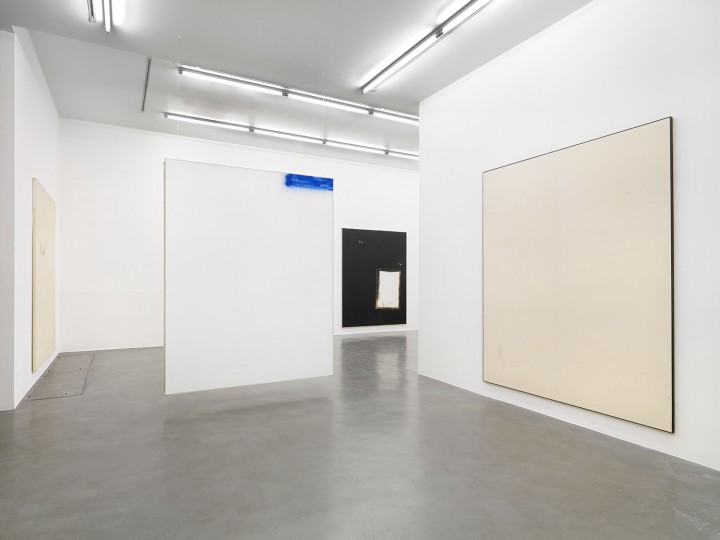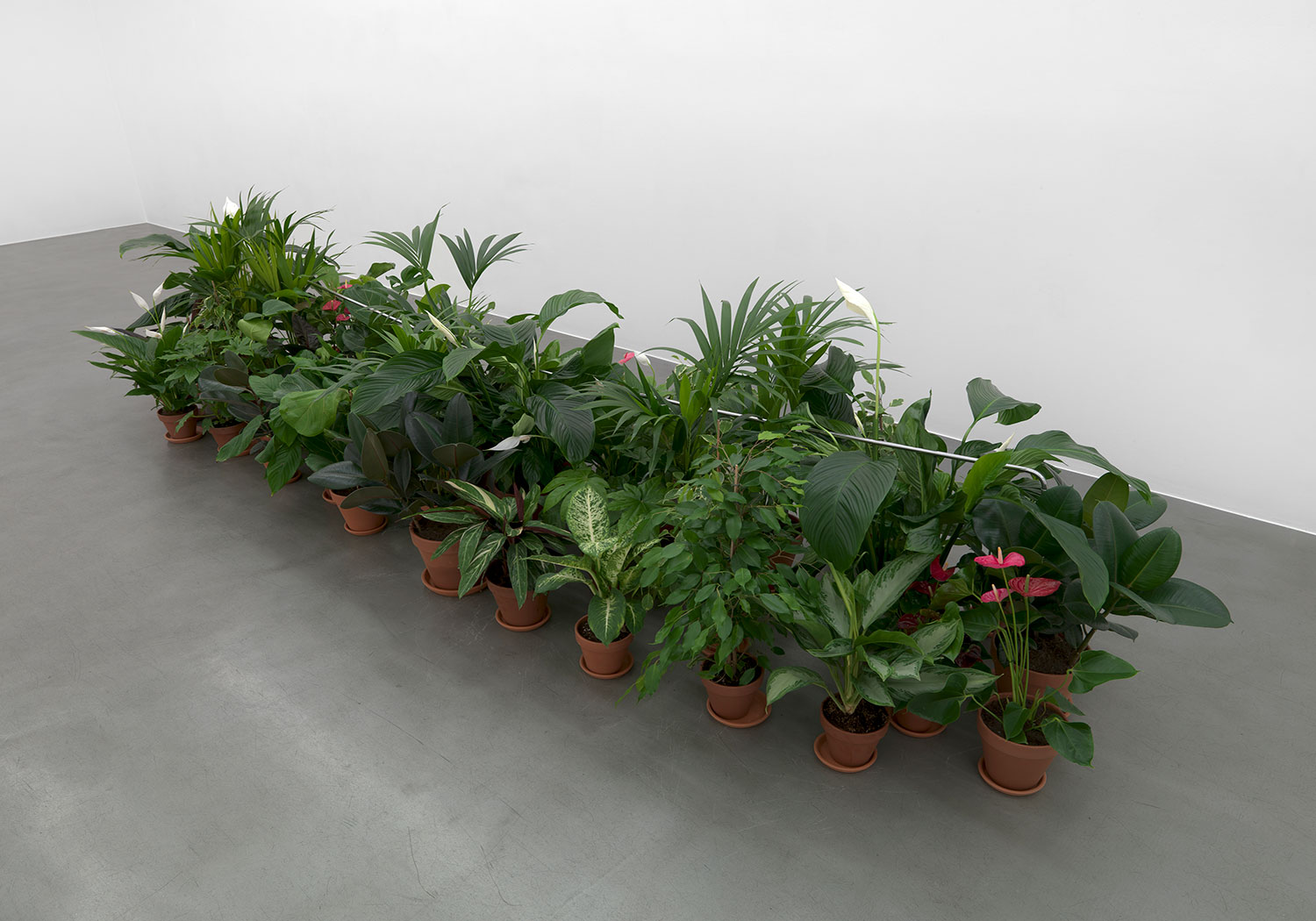F: a letter with which so many words begin. Sounds formed by the tongue, falling from the mouth in languages familiar and foreign. Let your mind wander into the imaginative potential wrapped up in a lone F (whether you give an F or not). For David Ostrowski, apparently F stands for Failure. Developed over the past several years, every painting in the artist’s ongoing “F series” is titled with this letter — failure flowing, knowing no bounds. A number of these works were brought together for Ostrowski’s first solo show in the UK: “Yes, or Let’s Say No.”
On first encounter, the formal qualities of modernism are immediately recalled by the paintings: minimalist planes, geometric forms and lines, monochrome palettes, sparse surfaces, reduced gestures. But upon closer inspection, each canvas reveals itself to be quietly characterful, brimming with idiosyncrasies, playfulness and impulsiveness. Rectangles of acid green, canary yellow and burnt orange become imperfect frames bordering vast white planes. You could almost step into the empty space and explore the void. Indeed, one almost-bare canvas titled F (Auch die schönste Frau ist an den Füssen zu Ende, Elena’s feet) (2013) was marked with a single filthy footprint — a high arch and five delicate toes teasing the surface and the viewer. With a number of the paintings suspended within the gallery, rather than being wall-mounted, an encounter with these abstract works had a physical resonance. Ostrowski’s materials include dirt that has drifted onto pristine lacquered surfaces (reminiscent of cat hairs that might haphazardly cling to your clothing), spray paint, paper (torn, ripped and stained), cardboard and tape. Marks rhythmically repeat through the works; spontaneous gestures in cobalt blue recur, appearing as tears in the canvas. In one, a hazy rectangle is sprayed in the top right-hand corner, a half-formed blue sky shimmering above, interrupted. As a whole, these elements combine to lend a sense of human warmth to these paintings; they are rendered experimental, connected to the hand of their maker and imbued with an atmosphere of urban existence and its quotidian matter. As exemplified by the exhibition’s title, the artist playfully juxtaposes concepts so that something appears as nothing and yes equates to no — one title even cryptically states F (A thing is a thing in a whole which it’s not) (2013). Nothing feels fixed or reliable, everything is malleable. So what else could F stand for?


